- Home
- Alison Weir
The princes in the tower
The princes in the tower Read online
The Princes in the Tower
Alison Weir
This book is dedicated to my cousin, Christine Armour, and in loving memory of Joan Barbara Armour
' ... look back with me unto the Tower.
Pity, you ancient stones, those tender babes,
Whom envy hath immured within your walls!
Rough cradle for such little, pretty ones!
Rude, ragged nurse, old sullen playfellow
For tender princes ... '
Richard III, Act IV, Scene I
'Ah me, I see the ruin of my House!
The tiger now hath seiz'd the gentle hind;
Insulting tyranny begins to jet
Upon the innocent and aweless throne:-
Welcome destruction, blood and massacre!
I see, as in a map, the end of all.'
Richard III, Act II, Scene IV
Contents
Author's Preface xiii
1 Richard III and the Chroniclers 1
2 The Sanctuary Child 14
3 Richard of Gloucester 27
4 Clarence and the Wydvilles 37
5 'Deadly Feuds and Factions' 52
6 'Those of the Queen's Blood' 63
7 'An Innocent Lamb in the Hands of Wolves' 77
8 The Lord Protector 87
9 The Fall of Hastings 97
10 'This Act of Usurpation' 109
11 Richard III 128
12 Conspiracies 139
13 The Princes in the Tower 147
14 The Wicked Uncle 163
15 Rebellion 179
16 An Especial Good Lord 191
17 An Incestuous Passion 202
18 A Dark Prince 219
19 Pretenders 231
20 Tyrell's Confession 243
21 The Skeletons in the Tower 249
x
x
Genealogical Table: Lancaster and York 259
Select Bibliography 261
Index 273
xi
xi
Illustrations between pages 144 and 145
1 Early seventeenth-century (?) copy of a portrait of Richard III. (Courtesy of the Dean and Chapter of Ripon Cathedral)
2 Earliest surviving portrait of Richard, dating from c. 1516-22. (Society of Antiquaries, London)
3 The 'Broken Sword' portrait. (Society of Antiquaries, London)
4 Portrait of Edward IV by an unknown artist, c. 1516-22. (Society of Antiquaries, London)
5 Portrait of Elizabeth Wydville in the North Transept Window at Canterbury Cathedral, probably by William Neve between 1475 and 1483. (Woodmansterne Picture Library)
6 Illustration from The York Roll by John Rous, c. 1483-5. (By permission of the British Library)
7 The Tower of London, from The Poems of Charles of Orleans. (By permission of the British Library)
8 Copy by an unknown artist of a lost portrait of Henry Tudor of c. 1500. (Society of Antiquaries, London)
9 Stained glass window from Little Malvern Priory, Worcester, c. 1481, picturing Elizabeth of York and her sisters.
(Matthew Stevens)
xii
xii
10 Portrait by Maynard Waynwyk (working 1509-23) of Margaret Beaufort, Countess of Richmond. (Courtesy of the Marquess of Salisbury)
11 Edward V and Richard, Duke of York, from the North Transept Window at Canterbury Cathedral. (Woodmansterne Picture Library)
12 Hans Holbein's drawing from life of Sir Thomas More, c. 1527. (Windsor Castle Royal Library. © 1992 Her Majesty the Queen)
13 Engraving after a painting of the burial of the Princes by James Northcote. (Guildhall Library, Corporation of London)
14 Ruins of the Minoresses' Convent at Aldgate. (By permission of the British Library)
15 Photographs of the remains taken at the time of their exhumation in 1933-
16 The urn in which the bones repose. (Courtesy of the Dean and Chapter of Westminster)
17 The skull of Anne Mowbray. (Hulton Picture Co.)
xiii
xiii
Author's Preface
This is a book about the deaths, in tragic circumstances, of two children. It is a tale so rich in drama, intrigue, treason, plots, counterplots, judicial violence, scandal and infanticide, that for more than five centuries it has been recounted and re-interpreted in different ways by dozens of writers. And it is easy to see why: it is a mystery, a moral tale, and -- above all -- a gripping story. More compellingly, it is the story of a crime that has never been satisfactorily solved.
There are few people who have not heard of the Princes in the Tower, just as there are few people who do not relish a good murder or mystery story. In the case of the Princes, we have an especially fascinating mystery, not only because they were royal victims who lived in a particularly colourful age, nor because there are plenty of clues as to their fate, but because speculation as to what happened to them has provoked controversy for so many hundreds of years. Even today, the battle still rages between those who believe that the Princes were murdered by their uncle, Richard III, and the revisionists, who have forwarded several attractive theories to the contrary.
It has to be said, at the outset, that it is unlikely that the truth of the matter will ever be confirmed by better evidence than we already have. We are talking about a murder that was committed in the strictest secrecy half a millennium ago in a period for which sources are scanty and often evasive. It is true that documents occasionally come to light which add yet another tiny piece to this extremely complex jigsaw-puzzle, but a historian can rarely hope to produce, in such a case, the
xiv
xiv
kind of evidence that would convince a modern court of law of the identity of the murderer. The historian's job is to weigh the evidence available, however slender and circumstantial, and then -- on a balance of probabilities -- reconstruct what probably happened. Thus are history books written, and we should not hope for anything better.
For three centuries and more, the revisionist view of Richard III has prevailed, and in recent years the efforts of the Richard III Society have ensured that textbooks are now being cautiously rewritten to present a kinder view of the last Plantagenet king. Yet since the discovery in 1934 of Dominic Mancini's contemporary account of Richard Ill's usurpation, which corroborated many details in the Croyland Chronicle and other contemporary works hostile to Richard, the majority of serious historians have rejected the revisionist view and stressed the huge amount of circumstantial and other evidence against Richard III.
I have therefore tried to approach this book with as open a mind as possible. I have studied all the contemporary works on the subject, as well as dozens of modern ones, and I have collated all the evidence available. I am now confident that the solution to the mystery presented here is the only plausible one. In my research, I have analysed every sentence written about the disappearance of the Princes in original sources, even rearranging information into its correct chronological sequence, and I have found -- somewhat to my surprise -- that it is indeed possible to reconstruct the whole chain of events leading up to the murder of the Princes, and to show, within the constraints mentioned above, how, when, where, and by whose order, they died. The truth of the matter is there in the sources, for those who look carefully enough. We are dealing here with facts, not just speculation or theories, which I have tried very hard to avoid.
I realise, of course, that my claims are highly contentious, but I am confident that they can be substantiated by good evidence, as I will demonstrate in the text. Thus I hope to entertain, inform, and convince all those who read this book.
Alison Weir
xv
xv
Acknowledgements
I
should like to acknowledge my gratitude to the following: Pamela Tudor-Craig (Lady Wedgwood) for permission to use material from her splendid and informative catalogue for the National Portrait Gallery's 1973 exhibition on Richard III; Mr Brian Spencer, for allowing me to use information printed in that catalogue and deriving from his unpublished manuscript about the inmates of the Minories: the Archaeological Resource Centre in York for allowing me to use the services of their textiles expert.
I should also like to acknowledge my indebtedness to the works of the late Professor Charles Ross and that of Mr Desmond Seward, which were a constant inspiration. I must also express my gratitude to my editor, Jill Black, for her constant encouragement and for some extremely helpful suggestions on chronology and dates, especially in relation to Gloucester's coup of April 1483. Gratitude is also due to my agent, Julian Alexander, for his unflagging enthusiasm, and to my husband Rankin and children John and Kate for their forbearance over the last two years.
Lastly, I must stress that, while all these good people have given valuable assistance with this book, the end product is entirely my own and reflects my conclusions, not theirs.
1
1. Richard III and the Chroniclers
Modern writers on the subject of the Princes in the Tower have tended to fall into two categories: those who believe Richard III guilty of the murder of the Princes but are afraid to commit themselves to any confident conclusions, and those who would like to see Richard more or less canonised. It is time therefore for the evidence to be re-evaluated and the events surrounding the disappearance of the Princes in 1483 to be reconstructed with greater confidence, because there does exist a considerable amount of contemporary evidence for a solution to this mystery.
It has been said by several writers that both the traditionalist and revisionist views of Richard III fit the known facts, but this is not the case: there are many blind alleys in this mystery, and many authors who have made the mistake of wandering up them. There also exist a great number of misconceptions about Richard III and the Princes, and because the subject still provokes furious debate, one gains the impression that to venture a firm view on the matter is to step into a minefield. However, this book was not written with the intention of fuelling the controversy, but because there is a need for the subject to be dealt with from an objective viewpoint based on common sense and sound research.
The subject of the Princes in the Tower cannot be studied without first evaluating the reliability of the few surviving original sources -virtually all we have to rely on. The late fifteenth century is a poorly documented period of English history. Few contemporary chronicles
2
survive and some official records still await examination. Thanks to a growing interest in the period, however, much research has been done over the last century and many excellent books have been published. Nevertheless, the second half of the fifteenth century remains in some respects very much a twilight world to the historian.
This book is mainly about the years 1483-5, the period spanning the reigns of Edward V and Richard III. Nearly all the narrative sources for this period have a partisan bias: most were written in the south of England and reflect anti-northern sentiment, for Richard III was identified very much with northern interests.
Few royal letters survive, and of the great collections of letters of the period -- the Paston Letters, the Cely Letters and the Stonor Letters -- fewer than ten refer to Richard Ill's usurpation of the throne in 1483. Much of what we know about the period comes from later sources, because for the years 1483-5 there are very few reliable contemporary narrative sources, and only two major ones.
The first of these is Dominic Mancini's account of the events leading up to July, 1483 -- De Occupatione Regni Anglie per Riccardum Tercium (The Occupation of the Throne of England by Richard III). Mancini was an Italian monk who lived in France and died after 1494. De Occupatione was his only prose work. Mancini came to England late in 1482 in the suite of the French ambassador. His brief was to report back to the Archbishop of Vienne on English affairs. He remained in London until July, 1483, leaving England the week after Richard Ill's coronation.
Mancini's book, which he completed on 1st December, 1483, at Beaugency, was an official report on recent events in England. His stated intention was 'to put in writing by what machinations Richard III attained the high degree of kingship', and he fulfilled this in the most vivid and objective manner. It is Mancini's objectivity that makes his book an invaluable source; he had no reason to write anything hostile to Richard III. A man of integrity, he confined himself only to the facts, and avoided falling into the habit affected by so many contemporary writers, that of using historical facts to illustrate a lesson in morality. Furthermore, he avoided referring to Richard's accession as a usurpation: 'occupation' is his preferred word.
Mancini's credibility as an historian is further reaffirmed by independent corroboration of his account by other sources, notably the Croyland Chronicle and the later accounts of Polydore Vergil and Sir Thomas
3
More, none of whom had access to Mancini's book. Indeed, it was lost for centuries; no one knew of its existence until 1934, when it was discovered by Professor C.A.J. Armstrong in the archives of the Bibliotheque Municipale at Lille, and subsequently published.
Mancini was reluctant to name his sources, but his account suggests that he had contacts at court, some of whom were apparently hostile to Richard III. The only source mentioned by name is Dr John Argentine, physician to Edward V, who could speak Italian. Mancini could also have made use of Italians living in London, in particular Pietro Carmeliano, a court poet to both Edward IV and Henry VII.
There are flaws in Mancini's book, of which he himself was aware, stating his reluctance to commit his account to paper as he did not know the names of some of those mentioned nor their motives. He admitted his account was incomplete in details. He lacked an understanding of English and a knowledge of English geography, and he paid little regard to chronology, although, in fairness to him, this was a period when recording dates was not considered of prime importance by historians. Nor is there in his book any physical description of Richard III -- perhaps we should assume he never saw him. This, and the fact that the latter part of the account is less detailed, suggests that Mancini was no longer able to make use of some of his former court informants.
The second major source for the period 1483-5 is the Second Continuation of the Croyland Chronicle. The magnificent Abbey of Croyland (now spelt Crowland) in Lincolnshire was at this time the most important and wealthiest religious foundation in the east of England, and its mitred abbot ranked with the bishops. Royal visitors to the abbey in the late fifteenth century included Henry VI, Edward IV, and Richard III when he was Duke of Gloucester. Several chronicles detailing the history of England and of the abbey were written at Croyland. Those prior to 1117 are spurious, but the three anonymously written continuations, spanning the periods 1144-1469, 1459-86 and 148S-6, are genuine.
The author of the Second Continuation (1459-86) states that it was written in the ten days ending on 30th April, 1486. The last events he describes are the marriage of Henry VII and the northern uprising of that spring. His work is without doubt the best source for the period. Where verifiable, it is highly accurate, and its author was a man who
4
could write authoritatively and from personal knowledge of many of the events he describes. It is clear too that he withheld information that was politically sensitive: his silence on certain subjects sometimes speaks volumes. Much of what he did write is substantiated by other writers, such as Mancini, Vergil and More, who never read his manuscript.
The author of the Croyland Chronicle did not approve of Richard III. As a churchman, he was shocked by Richard's behaviour, denouncing him for sensuality, holding an execution on a Sunday, and overspending. However, he declared his intention of writing his history 'in as unprejudiced a manner as we possibly can', asserting that he was presen
ting the reader with 'a truthful recital of the facts without hatred or favour'. And he was indeed a surprisingly objective, if ironic, observer for his time.
Who was he, this anonymous author to whom we shall refer merely as 'Croyland'? He described himself as a doctor of canon law and a member of the royal Council. We know also, from the text, that he was a southerner who resented northern interlopers in the government. He was a cultivated man who was well acquainted with the workings of Council, Parliament, Convocation and Chancery. Thus there is every reason to identify him with John Russell, Bishop of Lincoln (1480-94), Keeper of the Privy Seal (1474-83), and Lord Chancellor of England under Richard III (1483-5), an erudite and wise man who earned the praise of Sir Thomas More. Croyland Abbey lay within Russell's diocese, and the Third Continuation of its Chronicle records his month-long visit there in April, 1486, when the Second Continuation was written. The Bishop could well have dictated his history to a member of his retinue of twenty persons or to a monk living in the abbey. Most telling is the fact that the Bishop's own involvement in the events described is never referred to.
Croyland's manuscript was immediately suppressed when Henry VII, in the interests of dynastic security, ordered the destruction of all copies of the Act of Settlement known as 'Titulus Regius' (1484), which set forth Richard Ill's title to the throne: the text of this was incorporated in Croyland. Several copies of the manuscript were destroyed. A few survived, being hidden, but Croyland was not used as a historical source until 1619. The earliest surviving copy is that in the Cottonian Library (British Library MS. Cotton Otho B. XIII), which was seriously damaged by fire in 1731. There is a seventeenth-century
5
transcript in the Bodleian Library (Corpus Christi College MS. B. 208). The full Latin text was published by W. Fulman in 1684, and the standard translation remains that by H.T. Riley (1854).

 Richard III and the Princes in the Tower
Richard III and the Princes in the Tower Britain's Royal Families: The Complete Genealogy
Britain's Royal Families: The Complete Genealogy The Lady in the Tower: The Fall of Anne Boleyn
The Lady in the Tower: The Fall of Anne Boleyn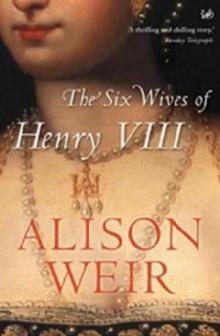 Six Wives of Henry VIII
Six Wives of Henry VIII Elizabeth of York: A Tudor Queen and Her World
Elizabeth of York: A Tudor Queen and Her World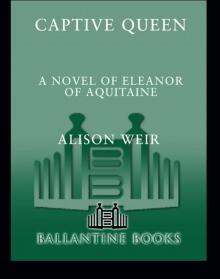 Captive Queen
Captive Queen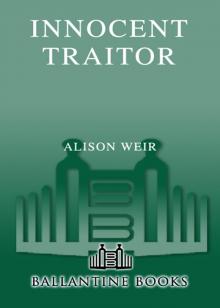 Innocent Traitor
Innocent Traitor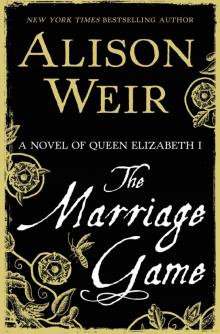 The Marriage Game
The Marriage Game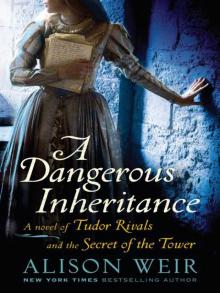 A Dangerous Inheritance
A Dangerous Inheritance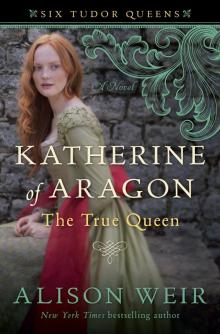 Katherine of Aragón: The True Queen
Katherine of Aragón: The True Queen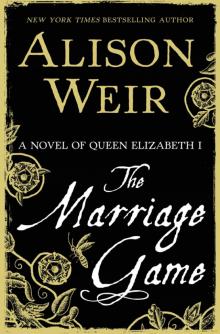 The Marriage Game: A Novel of Queen Elizabeth I
The Marriage Game: A Novel of Queen Elizabeth I Princes in the Tower
Princes in the Tower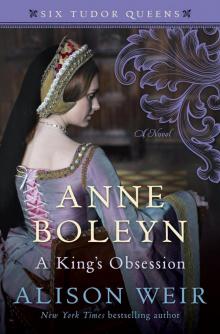 Anne Boleyn: A King's Obsession
Anne Boleyn: A King's Obsession Traitors of the Tower
Traitors of the Tower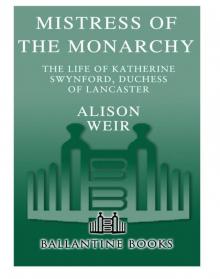 Mistress of the Monarchy: The Life of Katherine Swynford, Duchess of Lancaster
Mistress of the Monarchy: The Life of Katherine Swynford, Duchess of Lancaster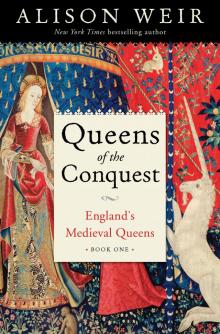 Queens of the Conquest: England’s Medieval Queens
Queens of the Conquest: England’s Medieval Queens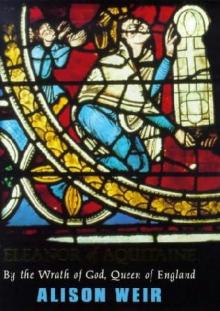 Eleanor of Aquitaine: A Life
Eleanor of Aquitaine: A Life Mary, Queen of Scots, and the Murder of Lord Darnley
Mary, Queen of Scots, and the Murder of Lord Darnley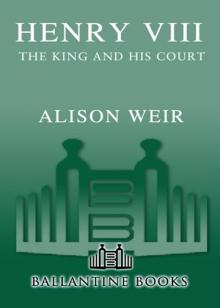 Henry VIII: The King and His Court
Henry VIII: The King and His Court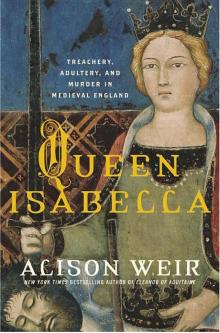 Queen Isabella: Treachery, Adultery, and Murder in Medieval England
Queen Isabella: Treachery, Adultery, and Murder in Medieval England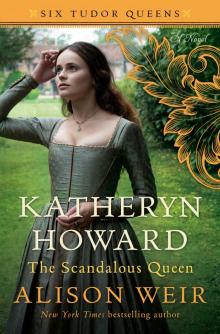 Katheryn Howard, the Scandalous Queen
Katheryn Howard, the Scandalous Queen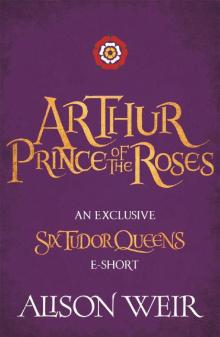 Arthur- Prince of the Roses
Arthur- Prince of the Roses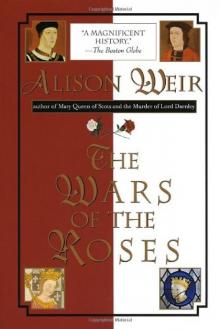 The Wars of the Roses
The Wars of the Roses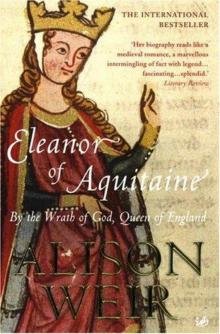 Eleanor of Aquitaine: By the Wrath of God, Queen of England
Eleanor of Aquitaine: By the Wrath of God, Queen of England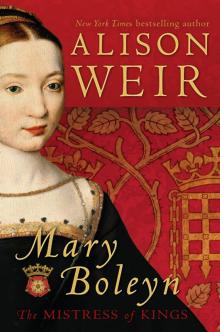 Mary Boleyn: The Great and Infamous Whore
Mary Boleyn: The Great and Infamous Whore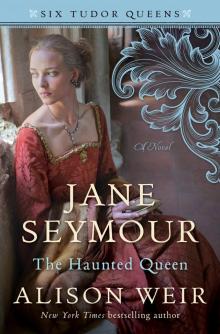 Jane Seymour: The Haunted Queen
Jane Seymour: The Haunted Queen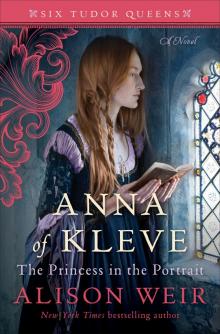 Anna of Kleve, the Princess in the Portrait
Anna of Kleve, the Princess in the Portrait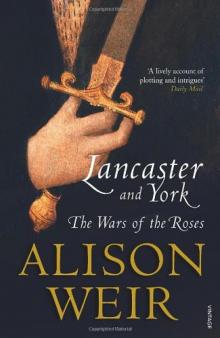 Lancaster and York: The Wars of the Roses
Lancaster and York: The Wars of the Roses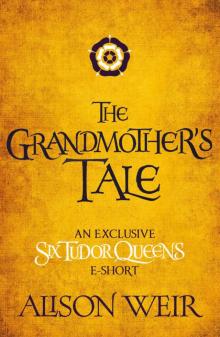 The Grandmother's Tale
The Grandmother's Tale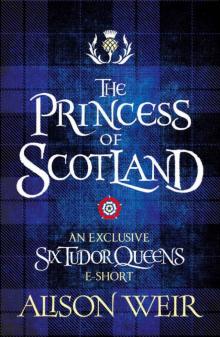 The Princess of Scotland (Six Tudor Queens #5.5)
The Princess of Scotland (Six Tudor Queens #5.5)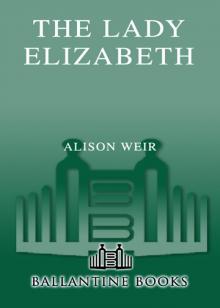 The Lady Elizabeth
The Lady Elizabeth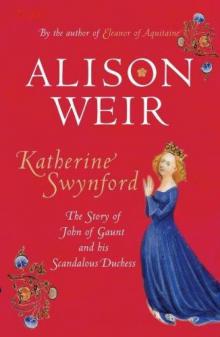 Katherine Swynford: The Story of John of Gaunt and His Scandalous Duchess
Katherine Swynford: The Story of John of Gaunt and His Scandalous Duchess The Curse of the Hungerfords
The Curse of the Hungerfords The Lost Tudor Princess: The Life of Lady Margaret Douglas
The Lost Tudor Princess: The Life of Lady Margaret Douglas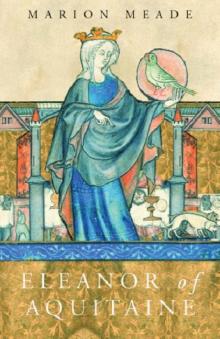 Eleanor of Aquitaine
Eleanor of Aquitaine Mistress of the Monarchy
Mistress of the Monarchy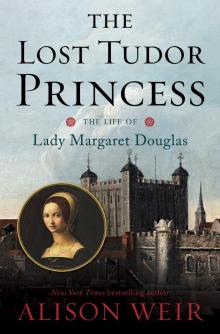 The Lost Tudor Princess
The Lost Tudor Princess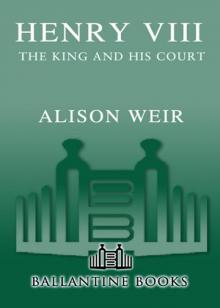 Henry VIII
Henry VIII Anne Boleyn, a King's Obsession
Anne Boleyn, a King's Obsession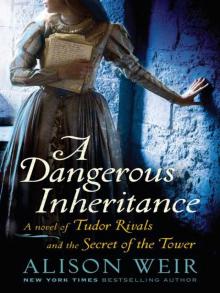 A Dangerous Inheritance: A Novel of Tudor Rivals and the Secret of the Tower
A Dangerous Inheritance: A Novel of Tudor Rivals and the Secret of the Tower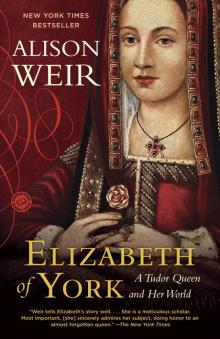 Elizabeth of York
Elizabeth of York Katherine of Aragon, the True Queen
Katherine of Aragon, the True Queen Katherine Swynford
Katherine Swynford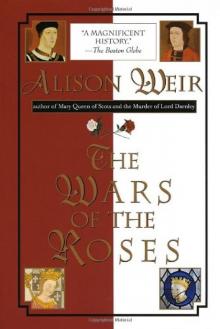 Wars of the Roses
Wars of the Roses Queens of the Conquest
Queens of the Conquest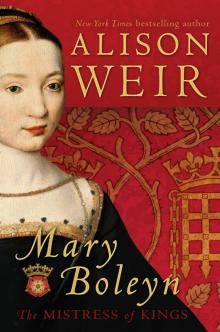 Mary Boleyn
Mary Boleyn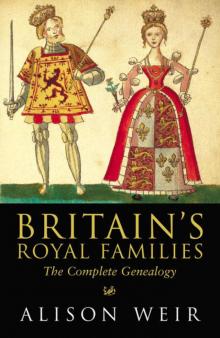 Britain's Royal Families
Britain's Royal Families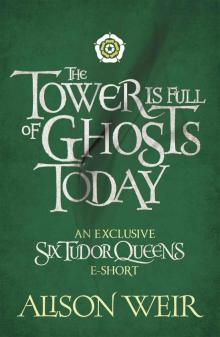 The Tower Is Full of Ghosts Today
The Tower Is Full of Ghosts Today Life of Elizabeth I
Life of Elizabeth I Anne Boleyn A King's Obssession
Anne Boleyn A King's Obssession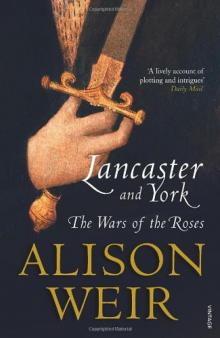 Lancaster and York
Lancaster and York Jane Seymour, the Haunted Queen
Jane Seymour, the Haunted Queen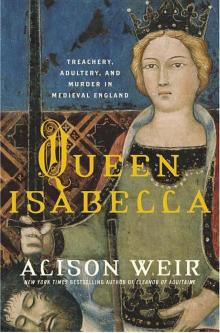 Queen Isabella
Queen Isabella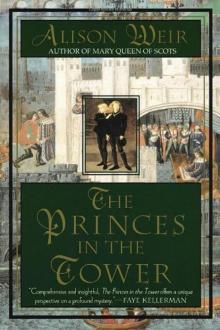 The princes in the tower
The princes in the tower